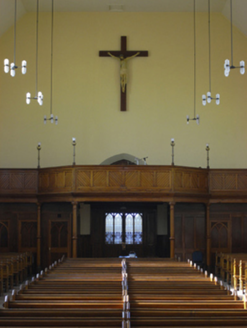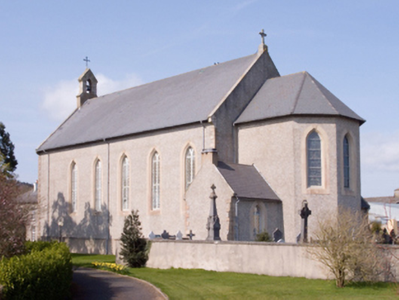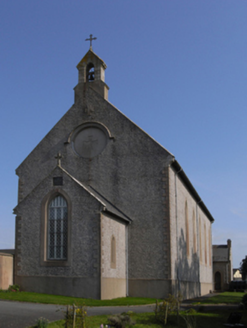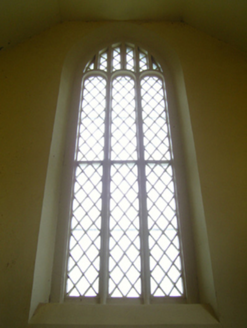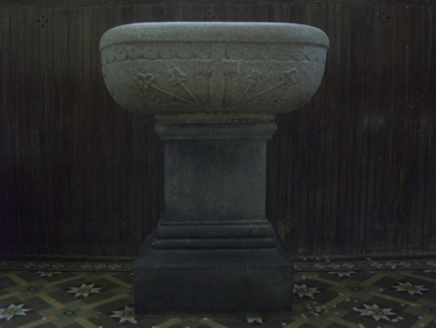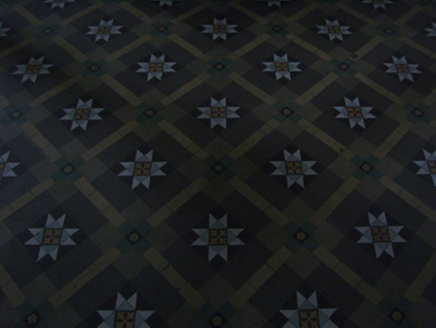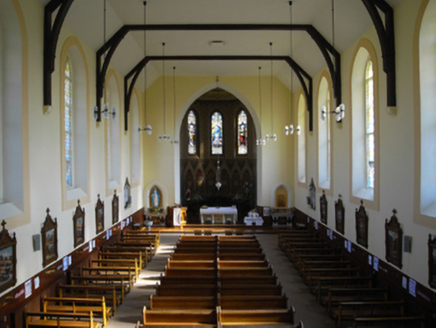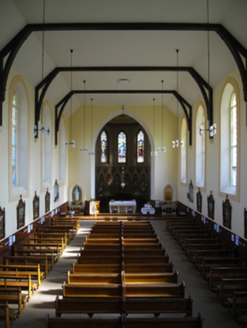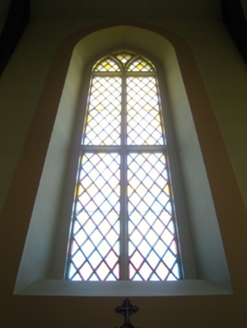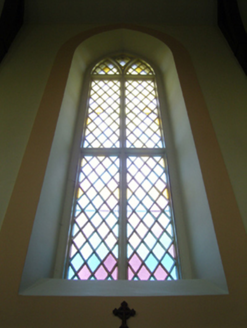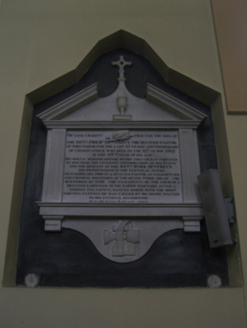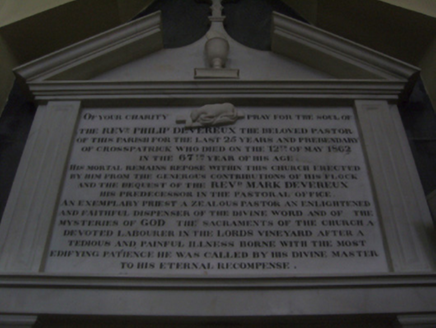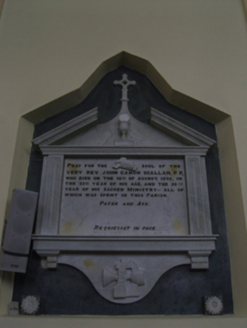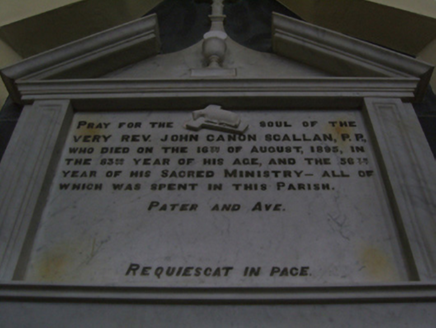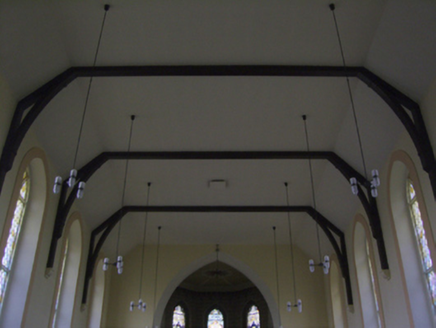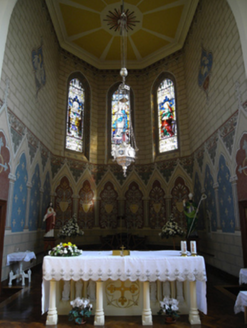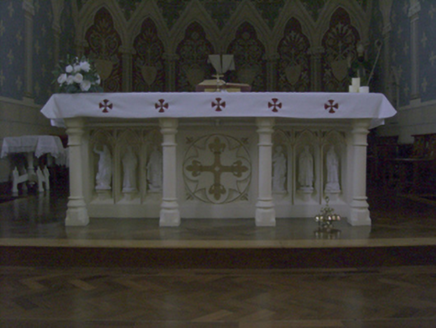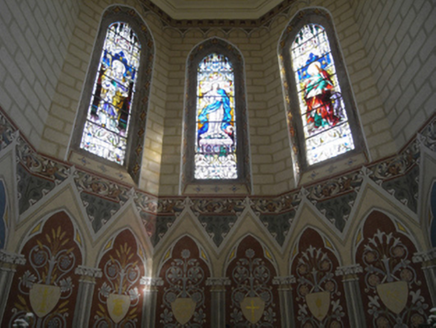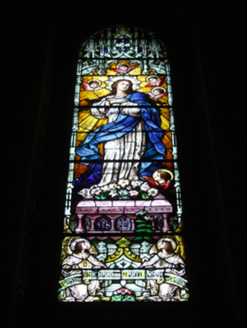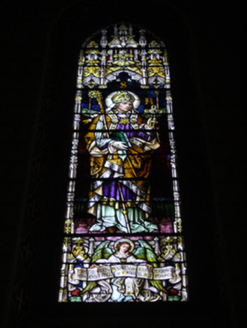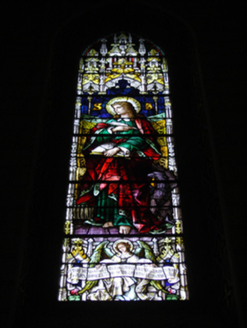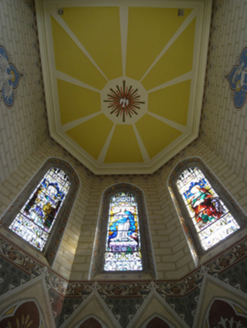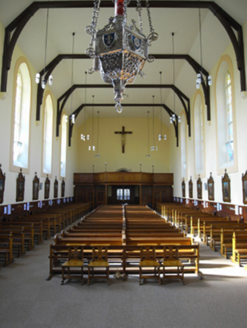Survey Data
Reg No
15703116
Rating
Regional
Categories of Special Interest
Architectural, Artistic, Historical, Scientific, Social, Technical
Previous Name
Saint Mary's Catholic Church
Original Use
Church/chapel
In Use As
Church/chapel
Date
1835 - 1840
Coordinates
294590, 132327
Date Recorded
03/10/2007
Date Updated
--/--/--
Description
Detached seven-bay double-height Catholic church, built 1838-9; dated 1839; opened 1839, on a rectangular plan comprising six-bay double-height nave opening into single-bay double-height apse (east) on a half-octagonal plan with single-bay single-storey gabled projecting porch to entrance (west) front. Renovated, 1975, with sanctuary reordered. Pitched slate roof with half-octagonal slate roof (east); pitched (gabled) slate roof to porch, clay ridge tiles, moss-covered cut-granite "saddleback" coping to gables on cut-granite "Cavetto" kneelers with Cross finials to apexes, moss-covered cut-granite "saddleback" coping to gable to entrance (west) front on cut-granite "Cavetto" kneelers with granite ashlar buttressed gabled bellcote to apex framing cast-bronze bell, and cast-iron rainwater goods on exposed timber rafters retaining cast-iron downpipes. Gritdashed roughcast walls on rendered chamfered plinth with rendered quoins to corners. Pointed-arch window openings with timber Y-mullions, and rendered "bas-relief" surrounds having chamfered reveals framing storm glazing over fixed-pane fittings having cast-iron lattice glazing bars. Lancet window openings (east) with rendered "bas-relief" surrounds having chamfered reveals framing storm glazing over fixed-pane fittings having leaded stained glass panels. "Rose Window" to entrance (west) front remodelled, 1975, with rendered surround having chamfered reveals framing "Pattée Formée"-detailed rendered infill. Pointed-arch window opening to porch below cut-limestone date stone ("1839") with timber mullions, and rendered "bas-relief" surround having chamfered reveals framing storm glazing over fixed-pane fitting having cast-iron lattice glazing bars. Interior including vestibule (west) with encaustic tiled floor, timber boarded or tongue-and-groove timber panelled wainscoting supporting timber dado rail centred on cruciform-detailed cut-granite font on cut-limestone pedestal, and vaulted ceiling; square-headed door opening into nave with glazed timber panelled double doors; full-height interior with encaustic tiled floor, diagonal timber boarded or tongue-and-groove timber panelled choir gallery (west) on a half-octagonal plan on wood grained cast-iron colonnette pillars, carpeted aisles between trefoil-detailed timber pews, timber boarded or tongue-and-groove timber panelled wainscoting supporting timber dado rail, Gothic-style timber stations below frosted glass windows, pair of Classical-style wall monuments (ob. 1862; 1895), part exposed braced Queen post timber roof construction on cut-granite thumbnail beaded corbels with vaulted ceiling, and herring bone-pattern timber parquet stepped dais to sanctuary (east) reordered, 1975, with pointed-arch chancel arch framing Gothic-style altar below stained glass memorial windows (----) in mosaic tiled surround. Set in landscaped grounds.
Appraisal
A church erected to a design 'procured by J. Talbot [John Hyacinth Talbot (1794-1868)] from Mr. Pugin [Augustus Welby Northmore Pugin (1812-52)]' (Catholic Directory and Annual Register 1839, 236) representing an important component of the early nineteenth-century ecclesiastical heritage of County Wexford with the architectural value of the composition, '[a] lofty [and] spacious structure' (Lacy 1863, 482), confirmed by such attributes as the rectilinear "barn" plan form opening into a polygonal apse; the "pointed" profile of the openings underpinning an "Early English" theme with those openings showing pretty lattice glazing panels; and the handsome bellcote embellishing the roofline as a picturesque eye-catcher 'seen as an interesting object for several miles' (ibid., 482). Having been well maintained, the elementary form and massing survive intact together with quantities of the historic or original fabric, both to the exterior and to the restrained interior reordered (1975) in accordance with the liturgical reforms sanctioned by the Second Ecumenical Council of the Vatican (1962-5) where contemporary joinery; wall monuments commemorating Reverend Philip Devereux PP (d. 1862) and Reverend John Scallan PP (d. 1895); jewel like stained glass signed by Franz Mayer and Company (established 1847) of Munich and London; and "trompe l'oeil" mosaic work, all highlight the artistic potential of the composition: meanwhile, a part exposed roof construction, '[a] gawky Queen post [and] an unusually early example of an open roof' (Williams 1994, 376), pinpoints the engineering or technical dexterity of a church making a pleasing visual statement in a rural village street scene.
